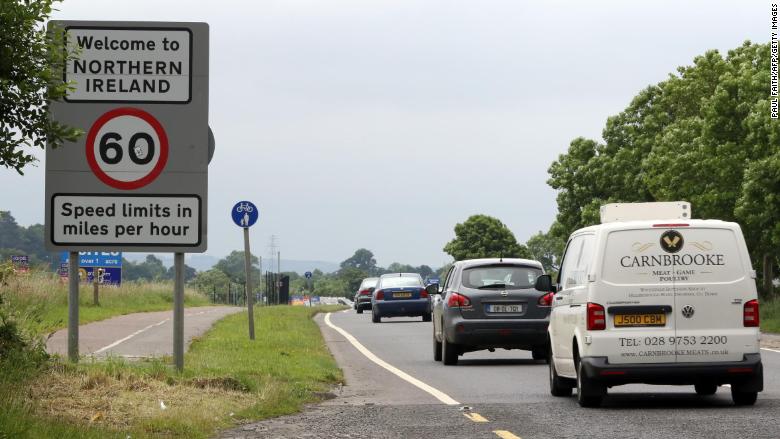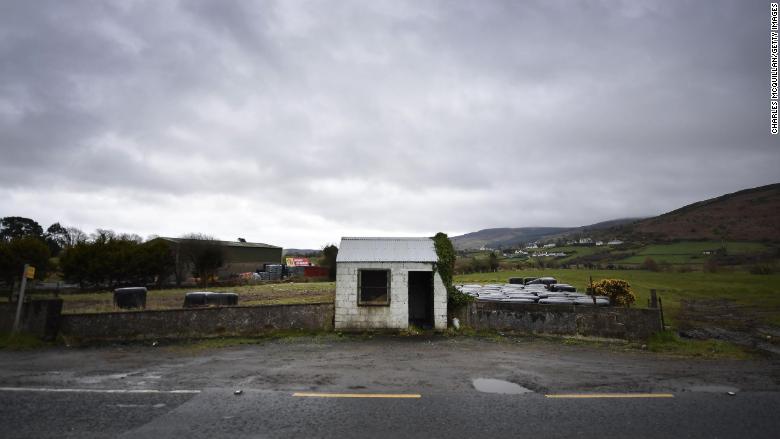
The U.K. has only one land border with the European Union. But that could be enough to scupper a Brexit deal.
How to manage the 310-mile border between Northern Ireland (part of the U.K.) and Ireland (part of the European Union) after Brexit has flummoxed officials in London, Brussels and Dublin.
The border is currently invisible: Traffic and goods flow freely, and there are no physical barriers. It is difficult even to identify where the border runs as it cuts across farms, through forests and along waterways.
That's a legacy of the Good Friday Agreement, which dismantled military checkpoints and watchtowers as part of a peace process that sought to end decades of sectarian violence. Gone too are the customs controls and inspections used to catch smugglers.
Britain and Ireland both want to avoid a return to a "hard border" that would not only delay people and commerce, but also revive memories of violence between Catholics and Protestants.

Here's the problem: Britain has made clear that it plans to leave the EU's internal market and customs union in March 2019. It also wants to reduce the number of immigrants after Brexit.
Those plans imply the need for physical controls at the border.
Membership in the internal market has allowed companies in Northern Ireland to do business in all 28 EU member states, selling goods and services to 500 million people living across the bloc.
But Brexit will leave Northern Ireland outside the EU. That means goods crossing into Ireland from Northern Ireland (whatever their origin) will need to be inspected -- and tariffs applied -- before they are allowed to enter that vast market.
"A hard border is a real possibility, and a frictionless border is almost an oxymoron," Katy Hayward of Queen's University Belfast wrote earlier this year. "This is especially true given that the overall logic of Brexit is interpreted by the U.K. government as being to 'take back' control of immigration, laws and trade."
Some analysts have suggested that whiz bang technology that tracks the movement of goods and people can be used to reduce friction.
New IT systems and technology could be combined with inspections and audits of goods away from the border. One think tank has even advocated drone patrols.
The tech solutions are largely unproven, however, and would cost billions.

Related: Britain and EU make progress on Brexit divorce bill
None of the proposals floated thus far are able to match the frictionless trade made possible by EU membership.
"We do not currently see how it will be possible to reconcile there being no border with the [British] government's policy of leaving the single market and the customs union," a committee of U.K. lawmakers warned Friday.
"The government's proposals, by its own admission, are untested and to some extent speculative," it added.
Related: 17 years without a raise? Welcome to Brexit Britain
The EU, meanwhile, has said that Northern Ireland might need to remain inside its internal market and customs union. Doing so would effectively create a sea border between Northern Ireland and the rest of the U.K.
The British government has argued for months that it can only fully address the Irish border issue when there is more clarity on future trade rules with the EU.
But negotiators are now racing to make headway on the issue, one of three areas where "sufficient progress" must be made before the EU will allow the Brexit to move onto future terms of trade.
Time is of the essence: Only 16 months remain until Britain leaves the EU and a border returns in Ireland.
If a breakthrough is achieved, Britain will be able to start work on the hundreds of trade, regulatory and legal agreements that are needed to ensure its economy can avoid significant disruption after March 2019.
If talks collapse, or get stuck on the Irish border issue, businesses are likely to start activating contingency plans in early 2018, moving more jobs and investment out of the U.K.


